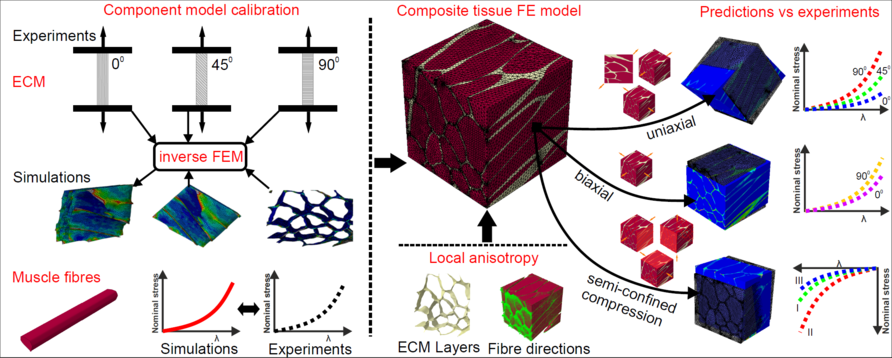Skeletal muscle is an anisotropic soft biological tissue composed of muscle fibres embedded in a structurally complex, hierarchically organised extracellular matrix. In a recent work (Kuravi et al., 2021) we have developed 3D finite element models from series of histological sections. Moreover, based on decellularisation of fresh tissue samples, a novel set of experimental data on the direction dependent mechanical properties of collagenous ECM was established (Kohn et al., 2021). Together with existing information on the material properties of single muscle fibres, the combination of these techniques allows computing predictions of the composite tissue response. To this end, an inverse finite element procedure is proposed in the present work to calibrate a constitutive model of the extracellular matrix, and supplementary biaxial tensile tests on fresh and decellularised tissues are performed for model validation. The results of this rigorously predictive and thus unforgiving strategy suggest that the prediction of the tissue response from the individual characteristics of muscle cells and decellularised tissue is only possible within clear limits. While orders of magnitude are well matched, and the qualitative behaviour in a wide range of load cases is largely captured, the existing deviations point at potentially missing components of the model and highlight the incomplete experimental information in bottom-up multiscale approaches to model skeletal muscle tissue.
R. Kuravi, K. Leichsenring, R. Trostorf, E. Morales-Orcajo, M. Böl, A. E. Ehret
Predicting muscle tissue response from calibrated component models and histology-based finite element models
Journal of the Mechanical Behavior of Biomedical Materials, 117, 104375, (2021) [Link]

